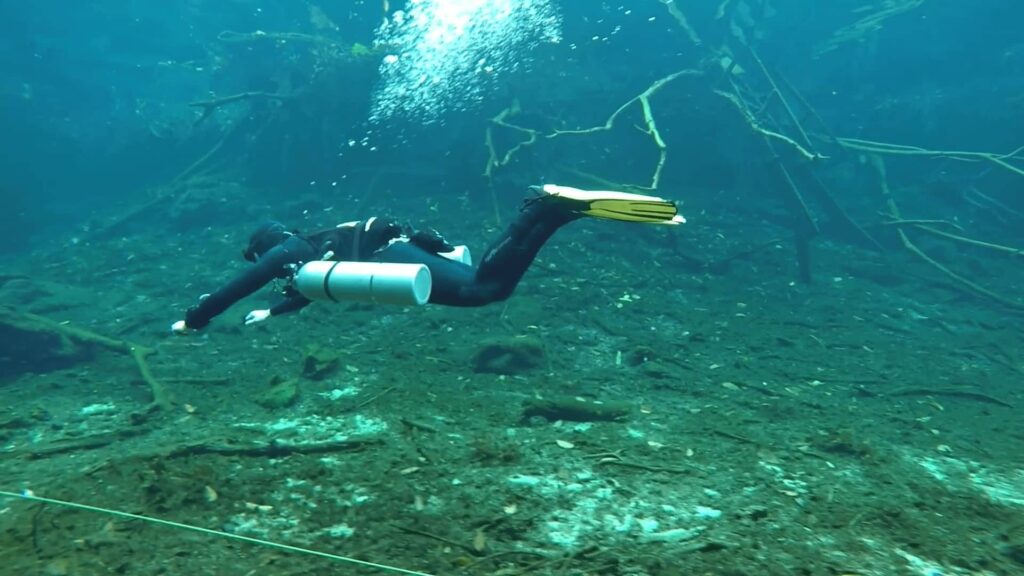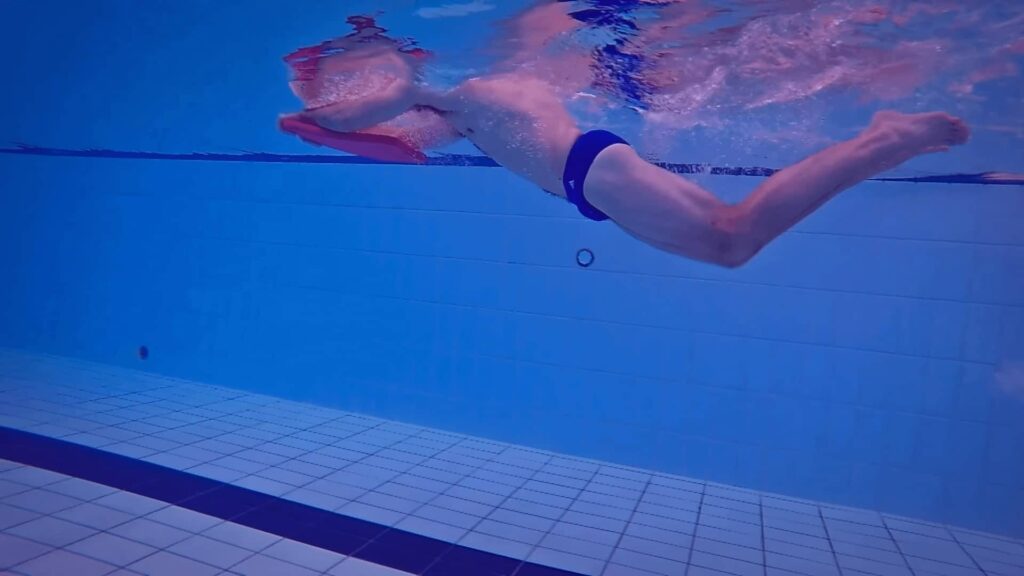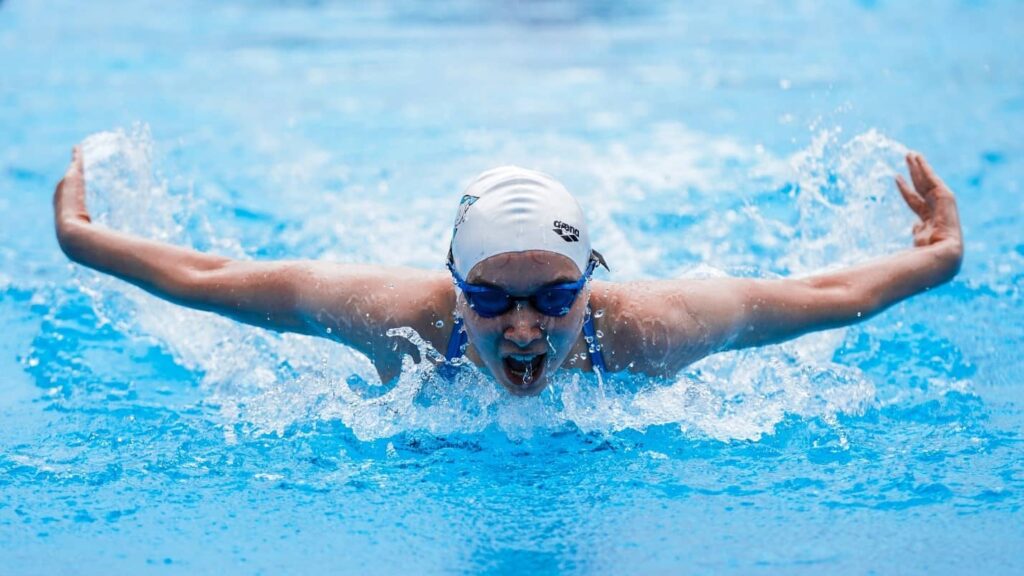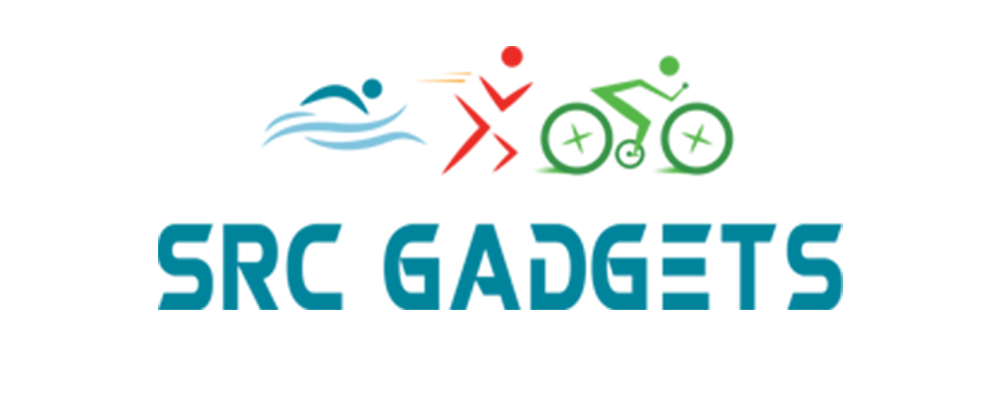Does Swimming Build Muscle?
Swimming is no doubt considered a form of resistance training. This low-impact exercise requires you to pull and push your different muscles continuously. You must have heard that swimming helps in building lean muscles. So, the question that arises in your mind is: Does swimming build muscle mass?
The short answer to this question is yes. Swimming can build muscle mass, but it would require extensive effort and sheer determination. Besides muscle mass, swimming strokes also lead to improved aerobic fitness, increased stamina, and it is also helpful in burning calories and cutting back on body fats.

There is a huge difference between swimming and bodybuilding. You might have seen the Olympic swimmer’s body and noticed that they are not similar to that of bodybuilders. This is because swimming strokes require extra time and effort to build arm and shoulder muscles mass compared to bodybuilding and weightlifting.
In this article, we will be explaining “Does swimming build muscle?” and what other factors you should consider getting abdominal muscles through swimming.
Is Swimming Resistance Training?
The process of training starts with the stretching of the arm muscles causing them to tear apart. You might be wondering why you feel a sensation of soreness and fatigue after swimming. It is because the lower body muscles are tearing apart during resistance training. However, the muscles recover with time, and that’s when you gain muscle mass.
The relationship between swimming and height increase is a fascinating aspect to explore when considering the benefits of this water-based sport. While swimming is primarily known for its cardiovascular advantages and its capacity to build lean muscle, it’s worth delving into how it may contribute to height development as well. While swimming doesn’t directly make you taller by stretching your bones, it can promote a healthy lifestyle and proper posture, which are essential factors in optimizing your natural height potential.
In case you didn’t know, swimming helps build muscle mass by applying resistance to various muscle groups throughout the body, including the neck muscles. It takes nearly 24-48 hours for these muscles to recover after tearing apart. However, once they are fully recovered, you will see growth in the neck muscles and other targeted areas.
If you’re eager to not only build muscle through swimming but also swim longer distances with less fatigue, it’s worth delving into the techniques that can make a significant difference. In our dedicated article, ‘Swimming Freestyle Without Getting Tired,‘ we provide a comprehensive guide to help you optimize your freestyle swimming technique.
Here’s an interesting fact you might not know:
The level of muscle tension created by water is notably higher than that experienced in the air.
This is the reason you must exert extra effort while swimming as compared to bodybuilding or weightlifting.
Does Swimming Make You Stronger?
Swimming provides a unique opportunity for a comprehensive full body workout that sets it apart from many other exercises. By mastering specific techniques, you can unlock the full potential of this activity for muscle development. Let’s dive into the benefits of swimming, which will undoubtedly inspire you to dust off your swimming gear:
Best Swimming Drills for Muscle Building
Are you a beginner? Don’t worry. We will tell you the best swimming techniques for strength and muscle building.
#1. Consistency Is the Key
Swimming once or twice a week and expecting to look like Michael Phelps? Never, you might be misguided by someone.
In swimming and bodybuilding, consistency is the key to strength and muscle building. Therefore, you need to swim at least 3-5 times a week to pull out the best body shape.
#2. Kick Drills
One of the secrets to maximizing your swimming’s muscle-building potential lies in full-body workout kick drills. Grab a kickboard and position it in front of your body as you engage various muscle groups. These drills not only propel you through the water efficiently but also yield remarkable results for your entire physique.

Engaging in kick drills effectively works your foot muscles, enhancing propulsion and ultimately delivering superior results.
#3. Frog Kick
You can use this technique to work on inner thighs and glutes. In addition, a frog kick will assist you in toning and shaping the body.

All you need to do is bend your knees, move your feet closer, and move your legs upwards, just like a frog.
#4. Butterfly Kick
To execute a butterfly kick effectively, bring your legs together and utilize your hips to propel your legs, functioning much like a fin.

This drill is beneficial not only for enhancing the deep ab muscles but also for strengthening the gluteal muscles. Are you aspiring to develop a six-pack? Then, incorporating this drill into your routine can help you achieve that goal!
Why Isn’t Swimming Alone Enough to Build Muscle?
You can surely build muscle by swimming alone. However, swimming and bodybuilding can altogether produce better results. Who doesn’t want impressive gains!

Swimming and weightlifting, when coupled together, can make your upper body muscles look like a masterpiece. However, you must be careful about certain things before doing these exercises. For instance, during weightlifting, it is advised to work the same muscles that you work during swimming.
Although swimming is the best exercise for muscle mass building, it requires weightlifting as well. Therefore, weights are used to complement swimming to help you build a body you have never imagined of. Moreover, you should avoid working out more on the chest and biceps.
Another important thing you need to take care of is your diet. If you want to gain muscles, it requires extra effort and energy. The energy comes from the proper diet. Now you know why junk food won’t give you energy.
The Nutritional Aspect of Swimming:
You probably would have heard of Michael Phelps a.k.a Flying Fish. He used to consume nearly 12000 calories every day. An average person consumes almost 12000 calories in a week. Astonishing. Isn’t it?
A perfect diet is the fuel you need during swimming to pull and push your muscles as hard as you can. Here is some nutritional advice for swimmers who want to build muscles:
5 Tips for Effectively Building Muscle – Swimming
Swimming and Muscle Building: Conclusion
Swimming is undoubtedly an excellent low-impact workout for developing your pectoral muscles without the risk of injury. However, it’s important to remember that swimming also enhances your lung capacity and stamina. As we’ve discussed, combining swimming with weightlifting can yield impressive gains, particularly for your pectoral muscles.
Furthermore, it’s crucial to pay attention to your diet to optimize the muscle development of your outer abdominal muscles.
Don’t stop here, watch this video to learn 5 Most Common Mistakes of Freestyle Swimming.

Eric Jordan
Writer | Triathlete
A writer by passion and a triathlete coach profession. In his free time, he swims, runs, cycles, and helps newbie athletes to achieve their goals.




